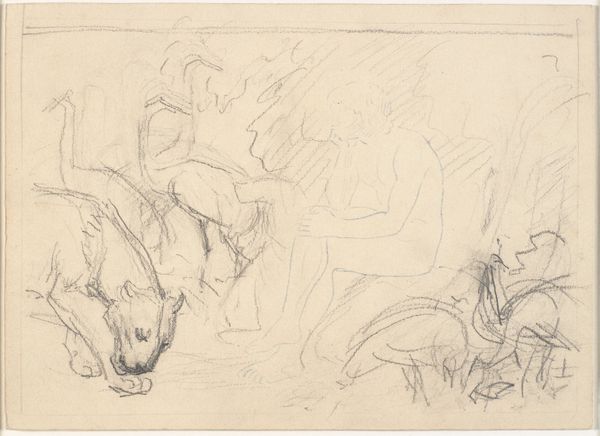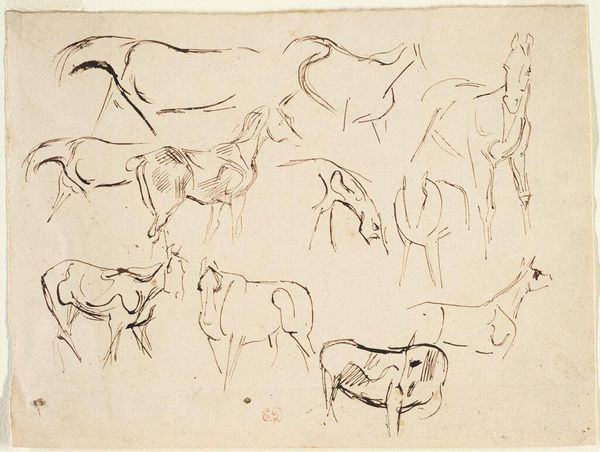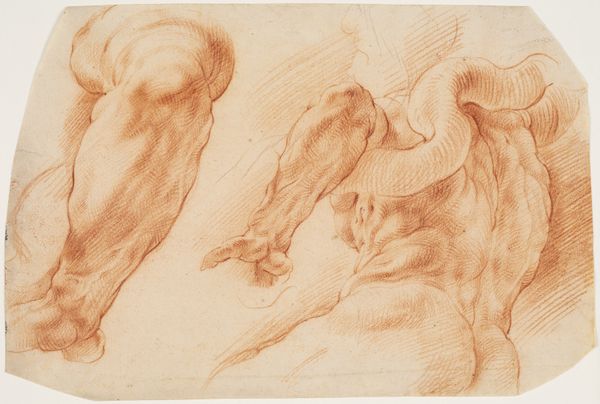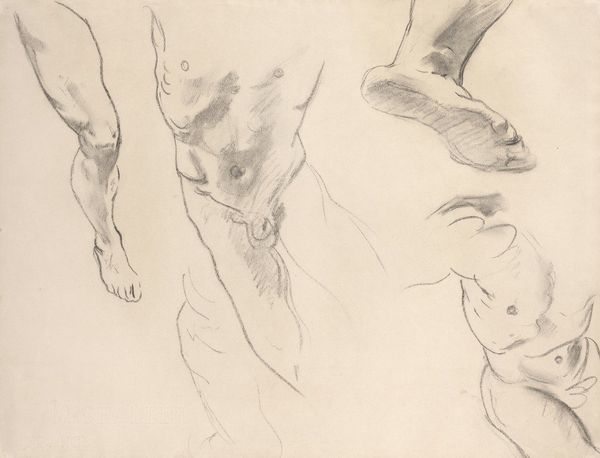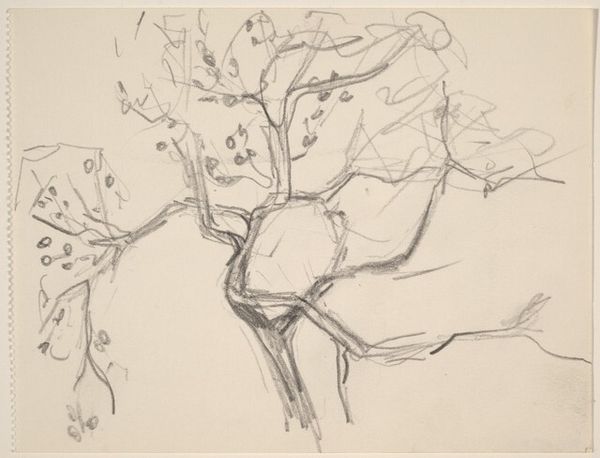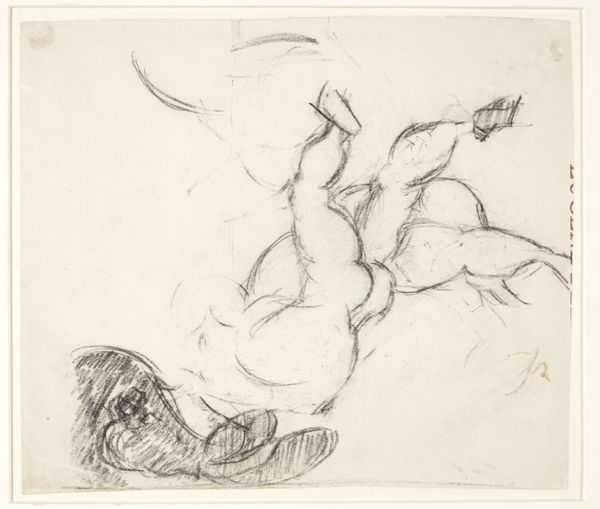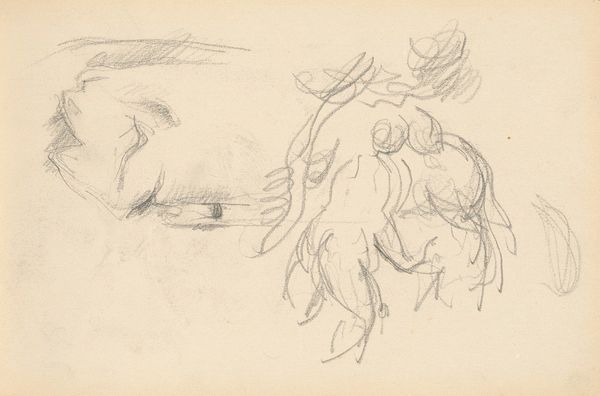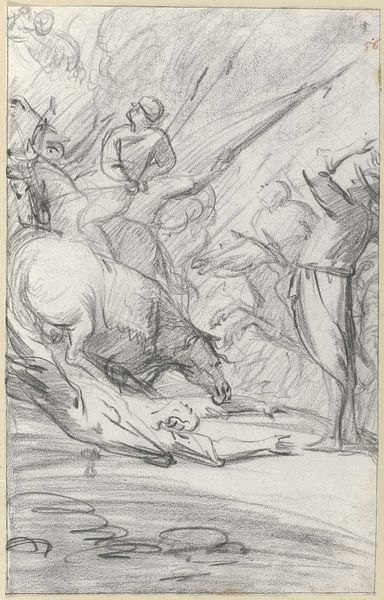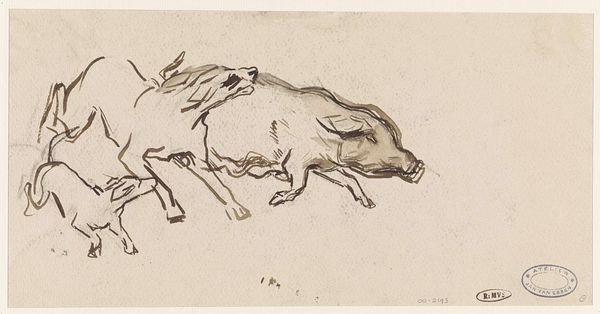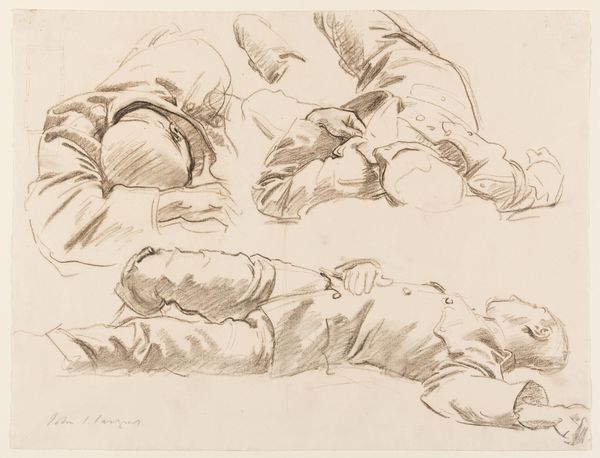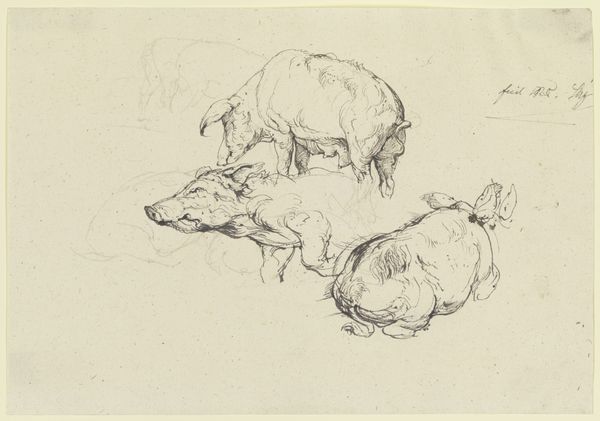
drawing, pencil, charcoal
#
portrait
#
drawing
#
animal
#
pen sketch
#
pencil sketch
#
sketch
#
pencil
#
sketchbook drawing
#
charcoal
#
realism
Dimensions: 254 mm (height) x 404 mm (width) (bladmaal)
Curator: Here we have Pierre Andrieu's "Studies After Moroccan Dogs," likely dating from the late 19th century. It’s a charcoal and pencil drawing currently held in the collection of the SMK, the National Gallery of Denmark. Editor: Immediately, I’m struck by the artist’s clear fascination with the animal form. There's a real sense of quiet observation here. The tentative lines, the multiple poses...it’s intimate. Curator: The dog, of course, has been a powerful symbol across cultures and throughout art history. But how would you interpret its significance in this particular piece? And bearing in mind Andrieu’s wider position within academic artistic circles of the period? Editor: The dog here doesn’t appear as a symbol of fidelity or status. They're depicted in poses of rest and vulnerability. In Western art, dogs can signal luxury or leisure, but these seem more wild and primal. And bearing in mind the title referencing their origin, Moroccan, these are likely studies from encounters abroad, so perhaps a nod to exoticism. The artist appears keen to investigate the dog, its physical nature. Curator: Yes, and one must wonder, what’s the dog doing here? It’s a series of sketches—almost anthropological. He produced work under Delacroix – he will have likely inherited much of his political sentiment which makes you wonder about its place within colonial era ethnographic and natural history drawing? Editor: That's fascinating. I do sense that anthropological interest in form, a wish to properly record it and I do think that feeling of cultural fascination seeps through even in a sketch like this one. Even its stillness carries layers. Curator: And for me that speaks volumes about how artists engage with the world, particularly during the colonial period. Editor: It gives you much to ponder as seemingly everyday images often have more historical baggage than one might think.
Comments
No comments
Be the first to comment and join the conversation on the ultimate creative platform.

